Own a business and want to get more people in the door?
Then, you’re gonna need local SEO.
In digital marketing, there’s always loads of new, innovative tactics.
But you can’t bypass the basics…
Forgoing local SEO is like having a pizza without the sauce.
Local SEO is a base, a key ingredient.
The other techniques and tactics are the delicious toppings.
The thing is 97% of people searched for a local business online last year.
You know how it is…
You’re out having a beer and it gets to that time where you need to look up a local restaurant.
Or you want to find out where you can get this service or buy that nick nack etc.
How do you make sure your business comes up first when potential customers perform a search?
Surprise, surprise…
Content is one of the best ways to improve local SEO.
So, I’ve put together a little story for you in the form of an infographic, that explains why content is so important for local SEO.
Plus, the types of content that will guarantee you a better ranking and more organic traffic.
Take a look:

Share this Image On Your Site
This is how the story goes, then…
Local SEO is indispensable for businesses.
The top ranking factors for local SEO are all tied to content.
And certain types of content work particularly well for local SEO.
It’s a story sweeter than The Notebook or Titanic, don’t you think?
My local SEO strategy will go on and onnnnn…

Now, let’s take a deeper look at those statistics…
The Power of Local SEO
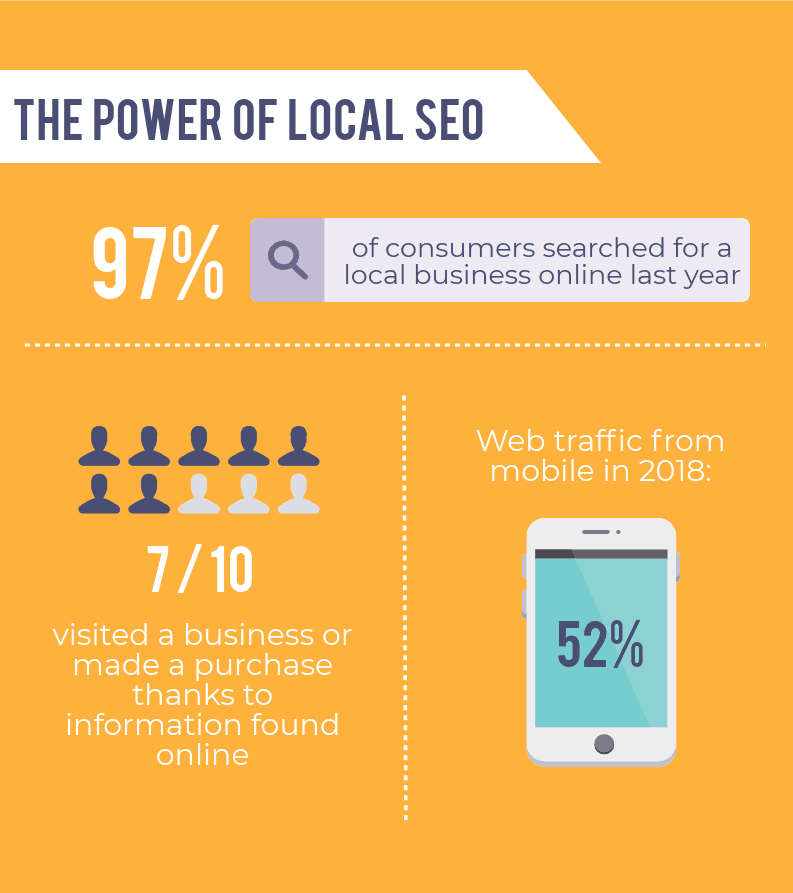
We haven’t yet reached the stage where people only make purchases online.
People still like going to brick-and-mortar stores etc., as shown in the above statistics.
Over half of all traffic comes from mobile.
People are searching on their phones for what to do, where to go, what to buy…
What’s more seven out of ten people visit a store or make a purchase based on info they found online.
If your local SEO is rubbish, how are they going to find your store?
Or how are they going to visit your business and make a purchase?
Evidently, we live in a world where people like to do their research online, before they contact or head to a business to make a purchase.
That’s why local SEO remains vital.
Localised Organic Ranking Factors
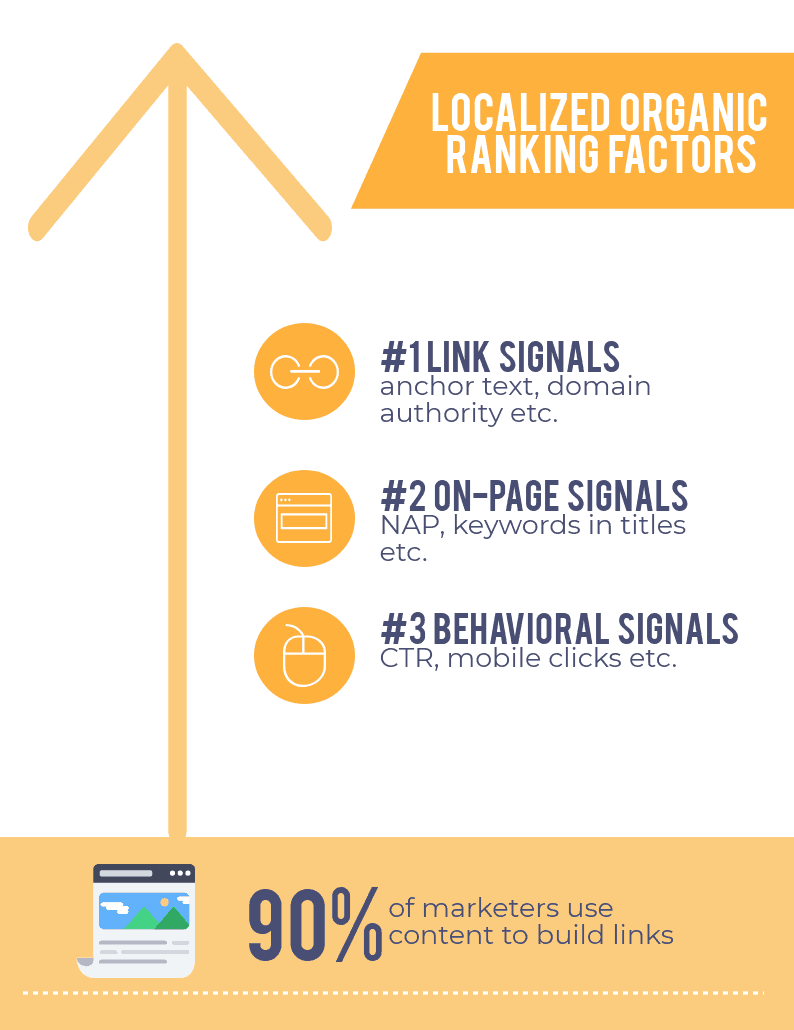
These are the top three ranking factors, according to the most recent data collected by Moz.
You can hit all three of these bad boys using content for local SEO.
The number one ranking factor, is of course, link signals.
And as the infographic says, 90% of marketers use content to build links.
Why?
To get links these days, link-worthy content is a prerequisite.
Then we have on-page signals, such as keywords in titles etc.
There are local SEO best practices that you need to follow.
On-page content is a major one.
Just take a look at these on-page optimisation techniques:

And our third most important ranking factor for local SEO is behavioral signals, such as click-through rate (CTR).
You want people to click on your search results, and for those clicks to count in Google’s eyes you need relevant, engaging content to support those clicks.
Larry Kim at WordStream says,
“Bottom line: Google cares a lot about overall user engagement with the results they show in the SERPs. So if Google is testing your page for relevancy to a particular keyword search, and you want that test to go your way, you better have a great CTR (and great content and great task completion rates). Otherwise, you’ll fail the quality test and someone else will get chosen.”
As you can clearly see, content plays a huge part in all three of the top localised ranking factors.
Now we can get onto the good stuff…
Content Ideas for Local SEO

Localised content can take many forms…
As long as it does two things:
- Targets local keywords
- Engages the local community
Use the following tips and examples to create your local SEO content strategy:
1. Posts Optimised for Local Keywords
Your first step should be to find local keywords i.e. ones that target your city/region and are relevant to your business.
What’s great about local keywords is that they carry more intent and are therefore more likely to convert.
There are two ways you can do this, both using Keyword Planner.
First, you can search for your location and a keyword, like so:
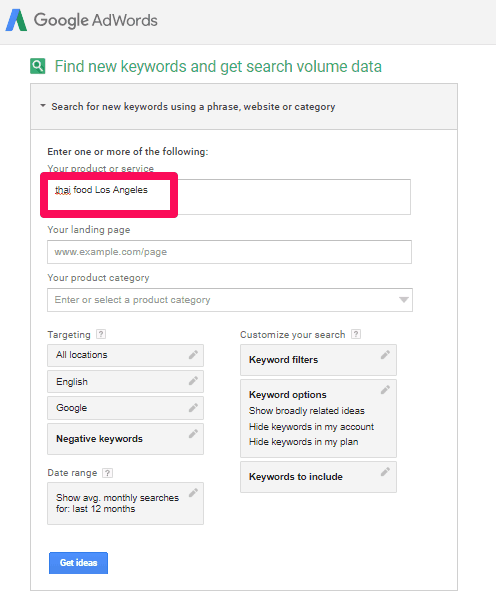
Or set your target location and then search for a keyword:
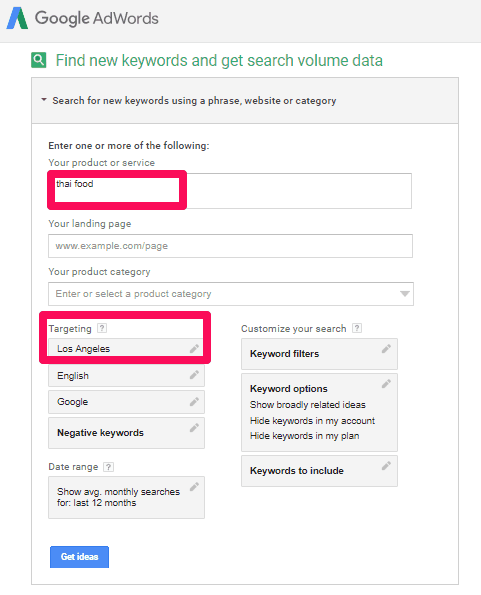
Compile a list of keywords that have a decent search volume but low competition.
Search volume isn’t as important as in regular SEO because even if the number of searches is low, the intent is there as I just mentioned.
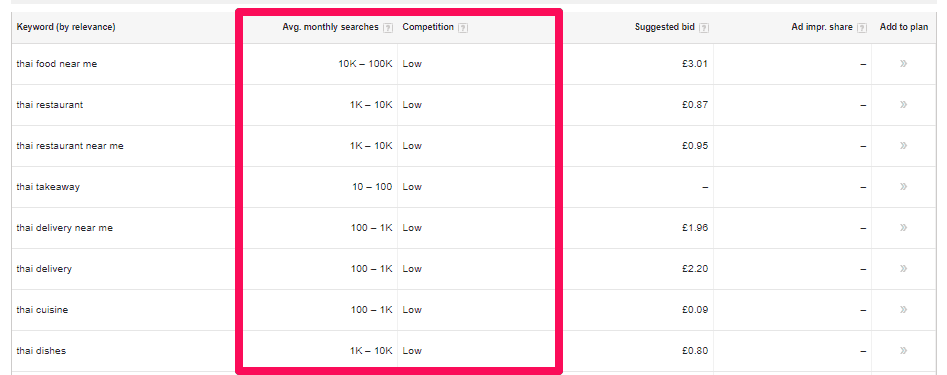
Now you have a bunch of keywords that you know local people are searching for.
So, you can formulate your content around them.
Using the above example, this might be “10 Most Popular Thai Dishes” or “Thai Cuisine: The Ultimate Guide”.
Also include these keywords when employing the following content frameworks.
2. Answer Local Questions
The more useful a piece of content is, the better it is for SEO.
According to the experts at SWEOR, “users react more favorably to impressive, original content that exudes utility and stops them from ever needing to seek out a similar resource.”
To provide that utility, use your posts to answer key questions or solve pain points related to your industry.
For instance, you could create a post about relevant local laws or regulations.
This post about filing for bankruptcy, answers a question specific to the state of New York:

Or you could create a post answering a question related to local weather, transport, or anything unique to your area as long as it’s relevant.
You may have come across questions when compiling your list of keywords.
For instance, a search for “copywriter” with the location set to Manchester turns up the question, “What’s a copywriter?”

Another way to find questions would be to search for your area on industry forums, social media groups or Quora:

These questions would make for excellent blog posts if your company operates in a related niche.
3. Guest Posts
Guest posting on local sites can have a number of benefits.
Kelsey Smith at Hubspot says,
“Be a guest blogger, talk to and about (positively, of course!) other people in your industry, and act as a resource provider for the community. If you’re an active participant in community conversations, the buzz around you grows in the form of inbound links, social media growth, and media coverage.”
The following example is a guest post from a luxury hotel on a local tourism site:

It makes sense for a hotel to post on a tourism site.
Similarly, you should find relevant, local sites.
If you’re an SaaS company, you might find a local tech or marketing blog.
If you’re a painter/decorator, you might find a local interior design blog etc.
Search on Google for local opportunities using search strings such as “location” + “topic” + “guest post” or “location” + “topic” + “write for us”, like so,
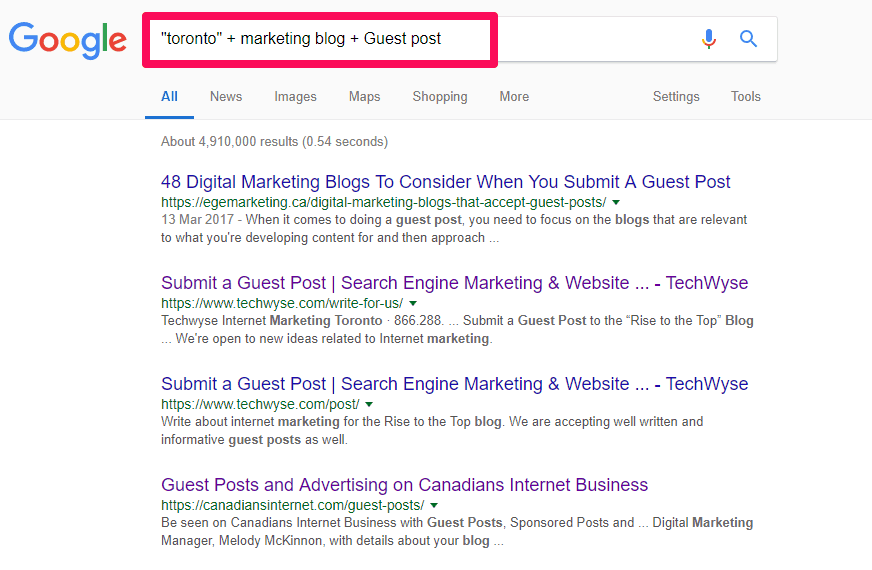
If the site accepts guest posts, reach out to them with your pitch.
4. Local News / Interest Pieces
Of course, newsjacking is common practice in content marketing.
Here you will focus specifically on local news in order to engage local residents and hit local keywords.
This estate agency reports on rising property prices in the local area:

Keep your eye on trending news in your region that you can provide your perspective on.
Search for your location and keyword in the “News” section of Google.
Not only will you find a bunch of relevant reports, you’ll be able to compile a list of local news sites that report on your industry.
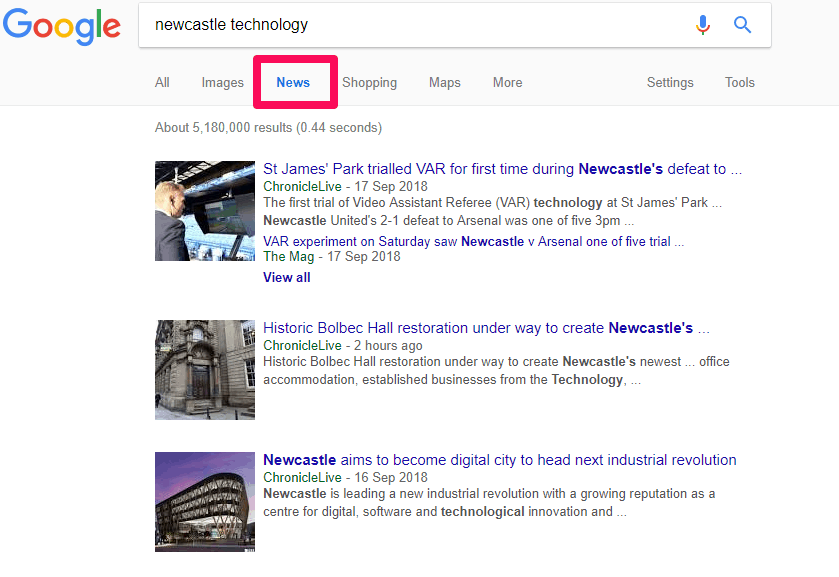
Alternatively, you could come up with a local interest piece.
This might take the form of a local guide like this marketer’s guide to Vancouver:
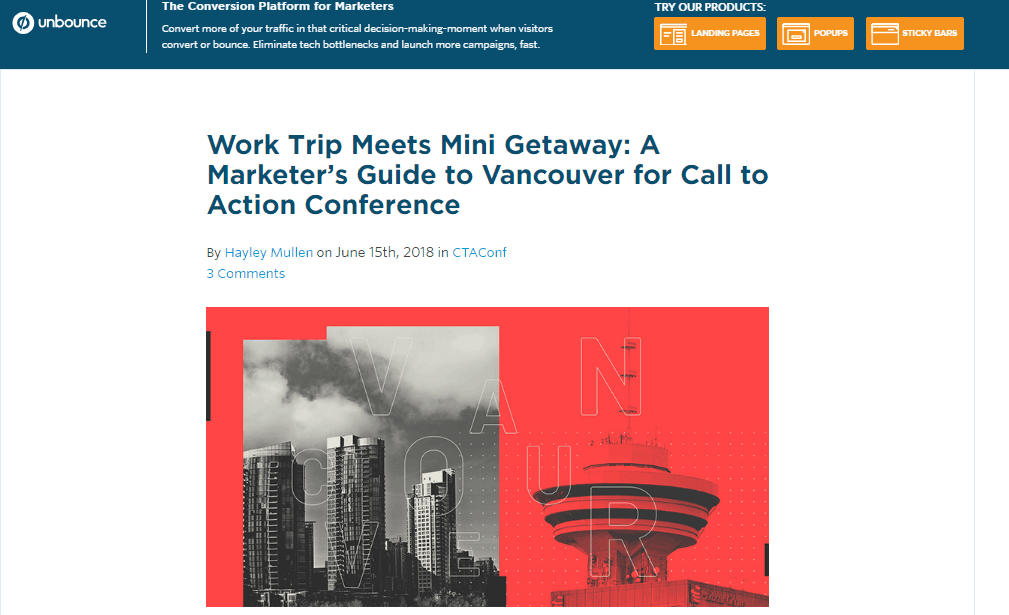
Look to your keyword list again to find topics that will captivate local audiences.
5. ‘Best of’ Posts
Create a post about other relevant local businesses, people or places etc.
It should be related to your niche, but not mention your direct competition.
For instance, here we have a London-based nutritionist covering the best local health food shops:

Find local keywords adjacent to your niche that will help you produce a ‘best of’ list.
If you search for “health food” and target London, you get these results:

So, another ‘best of’ post for this blog could be “London’s Best Spots for Healthy Snacks” or “Best Restaurants to Get Healthy Meals in London”, for example.
6. Local Event Coverage
Show your support for the local community by covering and helping to promote local events.
It would be even better if you could sponsor or participate in an event, such as an awards ceremony or charity fundraiser.
This kind of thing will also help heighten the reputation of your brand within your local community.
Strangely enough, your prominence within the local community IRL affects your search ranking.
You can also earn links from local sites that stage these events.
And cover such activities on your blog to create localised content.
This software company shares all of their recent wins in a blog post:
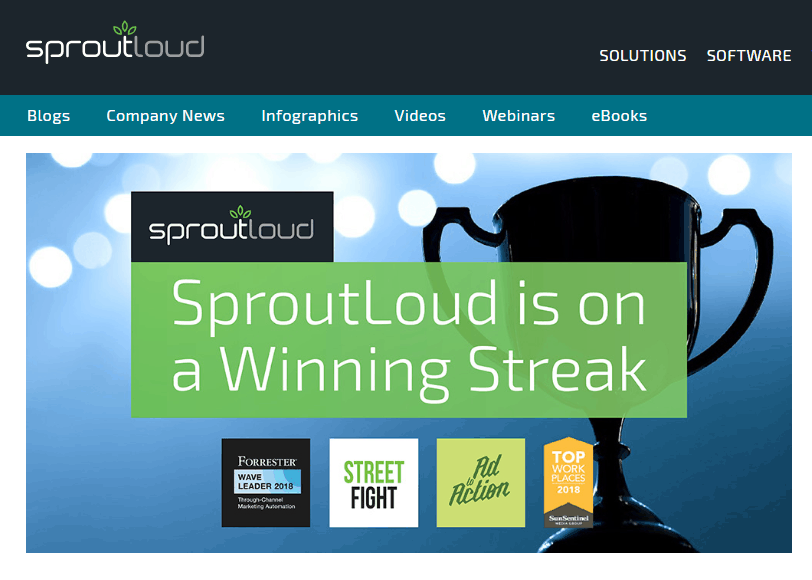
To find events, search for “top [keyword] events in [location]”.
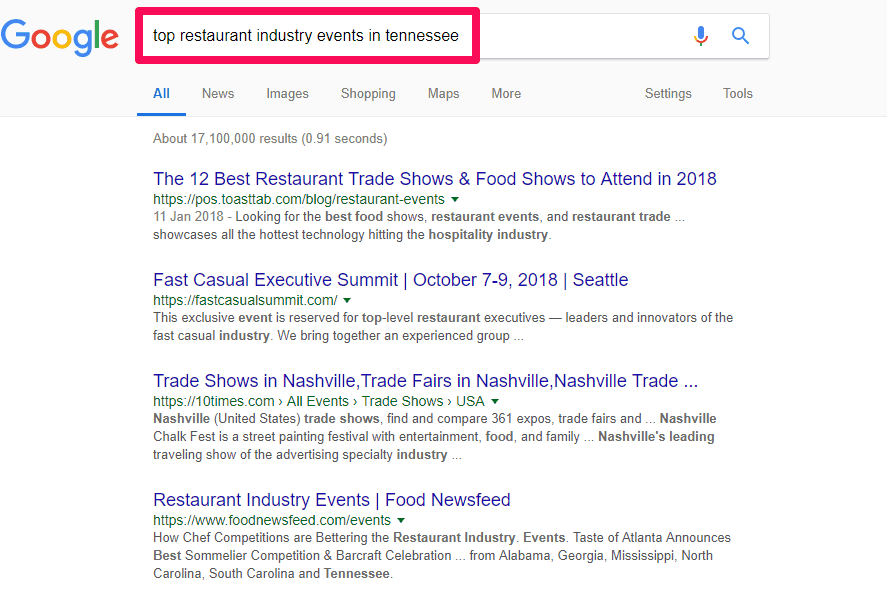
Also follow local influencers and speakers on social media.
They often attend local activities and will post about them regularly.
7. Company Announcements
Post about your new product, service, reaching a milestone on your roadmap or changes in your business.
This type of content will be similar to a press release but works best if you frame it as an important step for the local community.
In this way, you provide useful and engaging local content that’s related to your product or company.
This email marketing company shares its latest collaboration, for example:
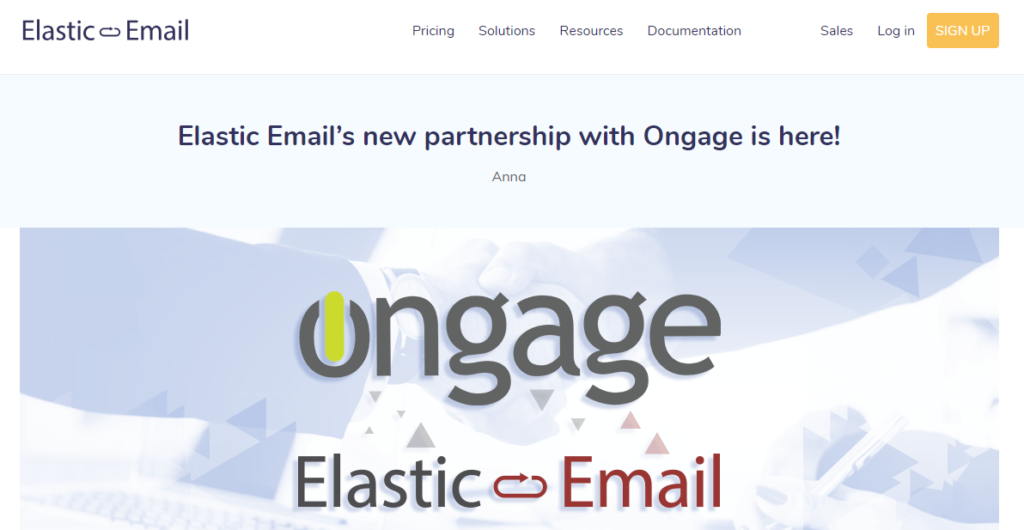
This type of content works for any industry.
If you owned a restaurant you might share a new addition to the menu, and so on.
Make sure whoever is writing your blog posts, be it a content manager or freelance writer etc. is in the loop regarding all departments of your company.
Communication is key.
So, now you have lots of ideas regarding how to improve local SEO using content.
Don’t forget to start with keyword research to help you shape your overall content strategy.
Conclusion
The statistics show that local SEO remains oh-so significant.
Consumers like to research online before visiting real-life businesses and establishments.
Content is the best way to comply with the top ranking factors – link signals, on-page signals and behavioral signals.
Achieve local links by creating guest posts and sponsoring local events.
Optimise content with popular local keywords to send out those on-page signals.
Improve behavioral signals such as CTR by producing high utility content that engages local audiences, e.g. local interest pieces or posts that answer their burning questions.
Now it’s over to you to get cracking on your local SEO. The first step – keyword research.


